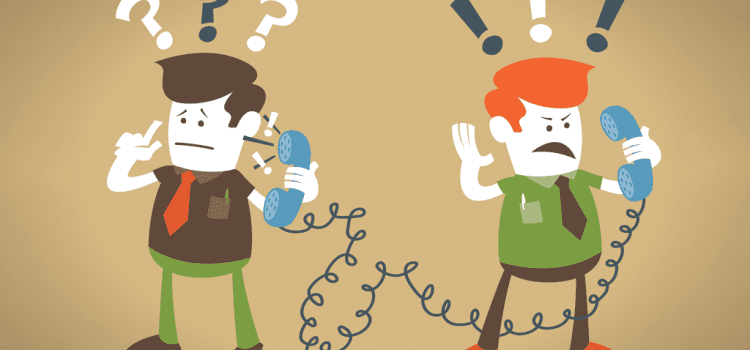Difficult clients and tricky customers can be a right royal pain in the you-know-what but everyone has ‘em and in the world of business, they’re near on impossible to avoid. They come with territory that’s for sure but that doesn’t mean you shouldn’t swat up on how to deal with them. This can be more of a challenge for self-employed freelancers who don’t have the back up of a workforce or senior colleague so we’re here with some useful tips to help out.
You don’t need us to tell you that the most effective way to dodge customer tension and those dreaded hour-long telephone rants is to implement provisions to avoid them in the first place. Great communication between you and your customers is one of the best ways to do this as it enables you to establish their needs and therefore head off any unnecessary insufficiencies. Regularly checking in with clients and providing them with a progress update will give both parties chance to bring up and diffuse any issues that would otherwise lead to much bigger problems.
However, as we said, it’d be a minor miracle if you never found yourself caught up in a fraught conversation with a disgruntled client, no matter how prepared you are. So we’ve put together a few helpful pointers, which you would do well to remember when faced with this commonplace situation.
Hear them out!
Listening to everything the customer has to say, no matter how much you want to butt in with your two cents, is the golden rule when it comes to dealing with a tricky customer. Give them chance to vent everything they feel they need to say and avoid the temptation to interject until they’re finished. Interrupting will only aggravate the customer and inflame what is probably an already-flammable situation.
Patience is a virtue and especially in circumstances like these. We definitely don’t work by the concept that the customer is always right but we do believe that acknowledging their opinion and accepting their problem is the right way to getting the best out of a bad situation. Agree that there is an issue then steer the conversation towards mutually agreeing on a resolution and when all is said and done, absorb what has been said as constructive criticism.
Don’t make promises you can’t keep
When you’ve got an angry customer spitting insults and poking holes in your work, it can be tempting to promise them the earth in order to keep the business or even just shut them up and get them off your back. However, this will only lead to more trouble in the long run. Agreeing to deliver on something that you know you can’t achieve will only pile unnecessary pressure on you and rub salt in the wound for the customer further down the line.
Be specific with your targets and get the client to be specific with their requirements in order to set realistic deadlines and projected outcomes. Not only is time management crucial for maintaining your own reputation as a freelancer, it’s also vital for nurturing happy customers. No doubt they will be running their own operations to a tight schedule so you need to be working in harmony with this but just be honest when they’re asking too much of you and admit when you have fallen by the wayside or made a mistake.
Don’t avoid them
Similarly, avoiding their calls, emails and messages is a sure way to rubbing your customer up the wrong way and will only prolong the inevitable. Nip the problem in the bud before it escalates and transforms into a grizzly monster that you can’t defend yourself against. Sometimes all it takes is some extra reassurance for an over-worked client who might be overreacting and looking for someone to take their weighty stress out on.
We’re not suggesting it’s okay to become a customer punching bag but sometimes, reaffirming your expertise and reasserting your professionalism is all it takes to eliminate a negative situation.
Do things face-to-face
When heated dialogues are being exchanged over the phone or via email, it can be easy for tone of voice to get misconstrued. Similarly, waiting on replies is frustrating at the best of times but in a delicate situation like this, you want to do everything you can to avoid the customer becoming anymore irritated than they already are. Insisting that you discuss the matter in person, then offering to take the client for coffee will create a more relaxed atmosphere in which reasonable and rational conversations can be held.
Face-to-face meetings can be difficult, especially for freelancers working from home, without any long-term office base, we get that. That’s where useful web applications like Skype and FaceTime come into play and provide a happy medium between physical discussions and impersonal keyboard conversations.
Don’t be afraid to cut ties
When you’re a self-employed freelancer, you can kind of afford to be a little bit pickier with your client list. It’s important that any business relationships you are working on are mutually beneficial so, if you’ve tried your best and still feel like a particular customer is having a detrimental effect on your work, it might be time to say goodbye. An unhappy customer leaving bad online reviews and spreading negative word of mouth is almost always worse than losing the business. It could simply be a personality clash, which is no fault of either party but in the world of freelance, it’s important to look out for number one.







